Fuwang Dong
Fundamental Limits of Communication-Assisted Sensing in ISAC Systems
Apr 12, 2024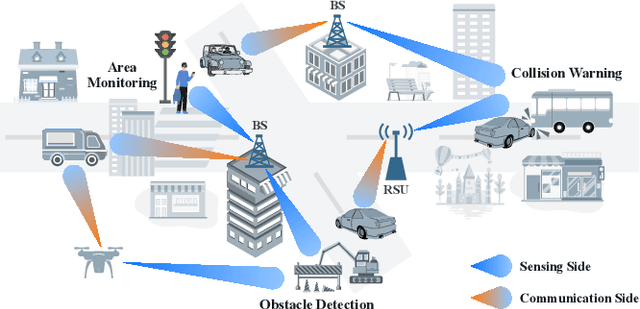
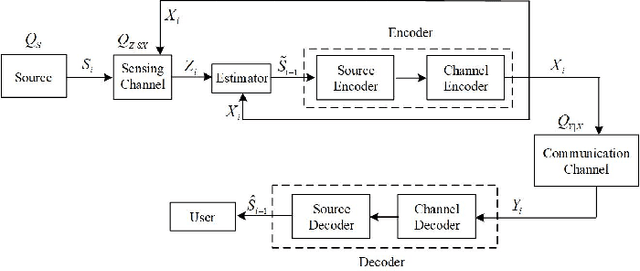
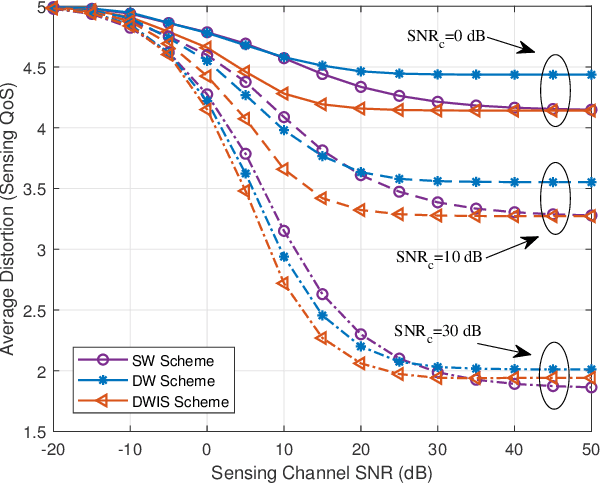
Abstract:Integrated sensing and communication (ISAC) system stands out as a pivotal usage scenario of 6G. To explore the coordination gains offered by the ISAC technique, this paper introduces a novel communication-assisted sensing (CAS) system. The CAS system can endow users with beyond-line-of-sight sensing capability, wherein the base station with favorable visibility senses device-free targets, simultaneously transmitting the acquired sensory information to users. Within the CAS framework, we characterize the fundamental limits to reveal the achievable distortion between the state of the targets of interest and their reconstruction at the users' end. Finally, within the confines of this theoretical framework, we employ a typical application as an illustrative example to demonstrate the minimization of distortion through dual-functional waveform design, showcasing the potential of CAS in enhancing sensing capabilities.
Communication-Assisted Sensing in 6G Networks
Nov 13, 2023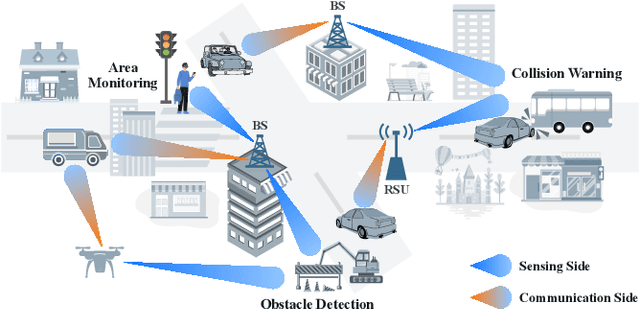
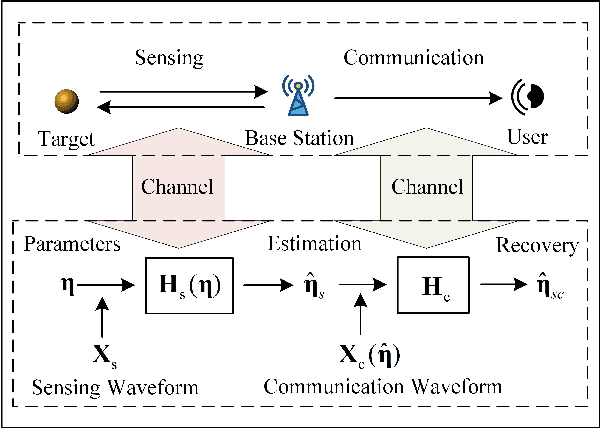
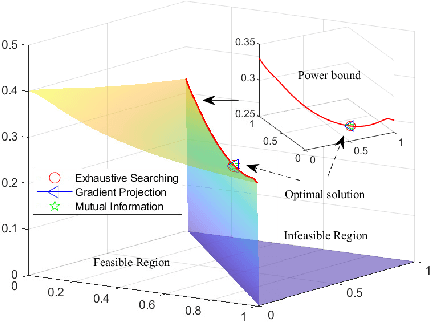
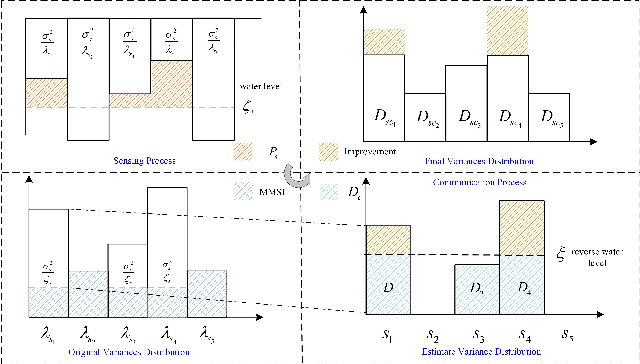
Abstract:The exploration of coordination gain achieved through the synergy of sensing and communication (S&C) functions plays a vital role in improving the performance of integrated sensing and communication systems. This paper focuses on the optimal waveform design for communication-assisted sensing (CAS) systems within the context of 6G perceptive networks. In the CAS process, the base station actively senses the targets through device-free wireless sensing and simultaneously transmits the pertinent information to end-users. In our research, we establish a CAS framework grounded in the principles of rate-distortion theory and the source-channel separation theorem (SCT) in lossy data transmission. This framework provides a comprehensive understanding of the interplay between distortion, coding rate, and channel capacity. The purpose of waveform design is to minimize the sensing distortion at the user end while adhering to the SCT and power budget constraints. In the context of target response matrix estimation, we propose two distinct waveform strategies: the separated S&C and dual-functional waveform schemes. In the former strategy, we develop a simple one-dimensional search algorithm, shedding light on a notable power allocation tradeoff between the S&C waveform. In the latter scheme, we conceive a heuristic mutual information optimization algorithm for the general case, alongside a modified gradient projection algorithm tailored for the scenarios with independent sensing sub-channels. Additionally, we identify the presence of both subspace tradeoff and water-filling tradeoff. Finally, we validate the effectiveness of the proposed algorithms through numerical simulations.
Random ISAC Signals Deserve Dedicated Precoding
Nov 03, 2023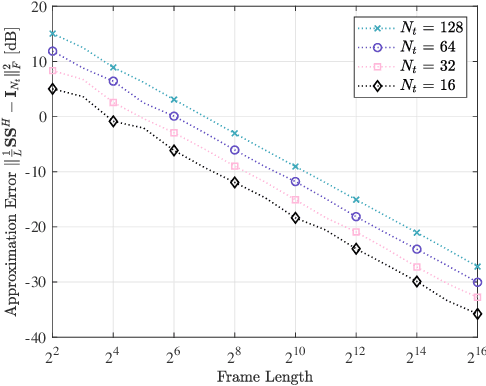
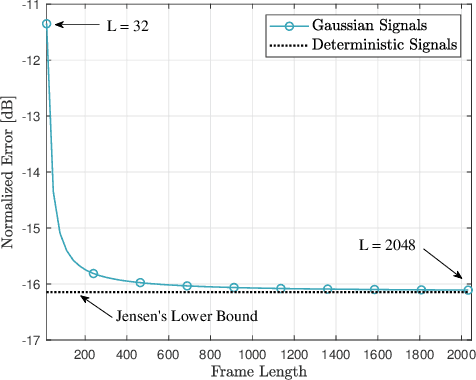
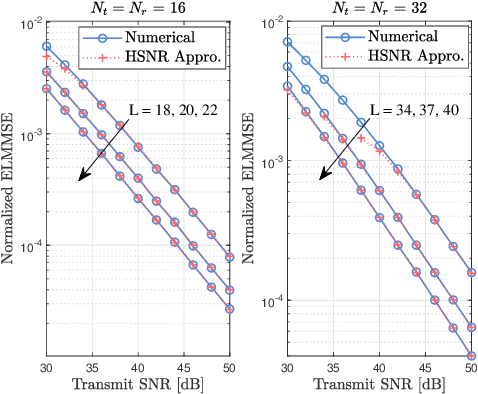
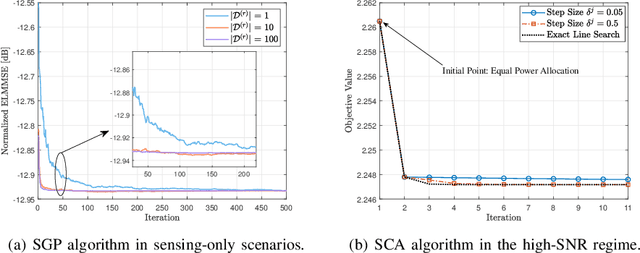
Abstract:Radar systems typically employ well-designed deterministic signals for target sensing, while integrated sensing and communications (ISAC) systems have to adopt random signals to convey useful information. This paper analyzes the sensing and ISAC performance relying on random signaling in a multiantenna system. Towards this end, we define a new sensing performance metric, namely, ergodic linear minimum mean square error (ELMMSE), which characterizes the estimation error averaged over random ISAC signals. Then, we investigate a data-dependent precoding (DDP) scheme to minimize the ELMMSE in sensing-only scenarios, which attains the optimized performance at the cost of high implementation overhead. To reduce the cost, we present an alternative data-independent precoding (DIP) scheme by stochastic gradient projection (SGP). Moreover, we shed light on the optimal structures of both sensing-only DDP and DIP precoders. As a further step, we extend the proposed DDP and DIP approaches to ISAC scenarios, which are solved via a tailored penalty-based alternating optimization algorithm. Our numerical results demonstrate that the proposed DDP and DIP methods achieve substantial performance gains over conventional ISAC signaling schemes that treat the signal sample covariance matrix as deterministic, which proves that random ISAC signals deserve dedicated precoding designs.
Sensing With Random Signals
Sep 06, 2023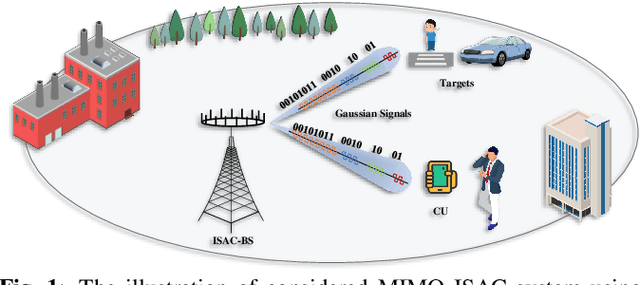

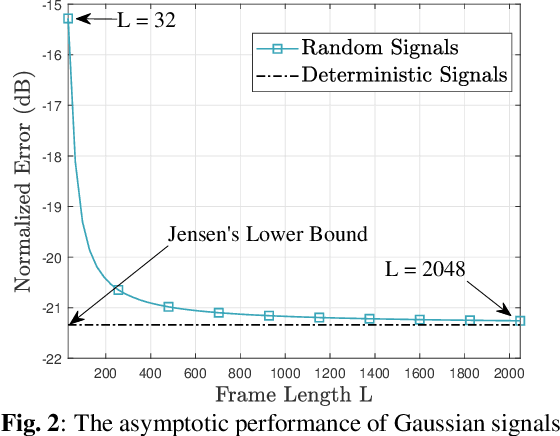
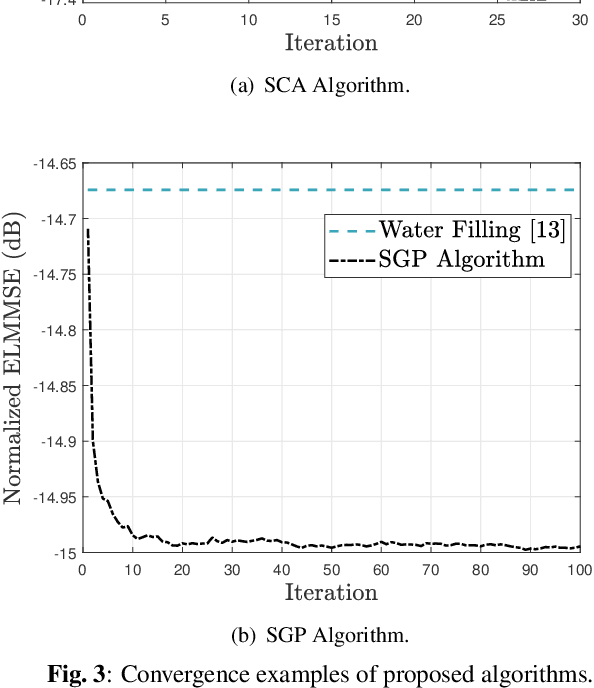
Abstract:Radar systems typically employ well-designed deterministic signals for target sensing. In contrast to that, integrated sensing and communications (ISAC) systems have to use random signals to convey useful information, potentially causing sensing performance degradation. This paper analyzes the sensing performance via random ISAC signals over a multi-antenna system. Towards this end, we define a new sensing performance metric, namely, ergodic linear minimum mean square error (ELMMSE), which characterizes the estimation error averaged over the randomness of ISAC signals. Then, we investigate a data-dependent precoding scheme to minimize the ELMMSE, which attains the {optimized} sensing performance at the price of high computational complexity. To reduce the complexity, we present an alternative data-independent precoding scheme and propose a stochastic gradient projection (SGP) algorithm for ELMMSE minimization, which can be trained offline by locally generated signal samples. Finally, we demonstrate the superiority of the proposed methods by simulations.
Sensing as a Service in 6G Perceptive Mobile Networks: Architecture, Advances, and the Road Ahead
Aug 16, 2023Abstract:Sensing-as-a-service is anticipated to be the core feature of 6G perceptive mobile networks (PMN), where high-precision real-time sensing will become an inherent capability rather than being an auxiliary function as before. With the proliferation of wireless connected devices, resource allocation in terms of the users' specific quality-of-service (QoS) requirements plays a pivotal role to enhance the interference management ability and resource utilization efficiency. In this article, we comprehensively introduce the concept of sensing service in PMN, including the types of tasks, the distinctions/advantages compared to conventional networks, and the definitions of sensing QoS. Subsequently, we provide a unified RA framework in sensing-centric PMN and elaborate on the unique challenges. Furthermore, we present a typical case study named "communication-assisted sensing" and evaluate the performance trade-off between sensing and communication procedure. Finally, we shed light on several open problems and opportunities deserving further investigation in the future.
Symbol-Level Precoding for MU-MIMO System with RIRC Receiver
Jul 27, 2023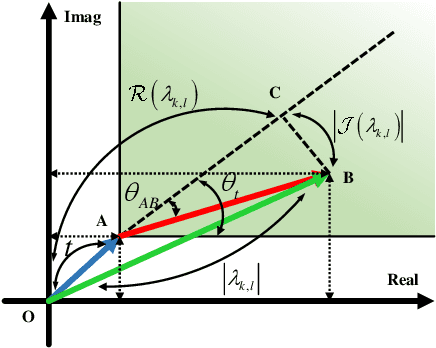
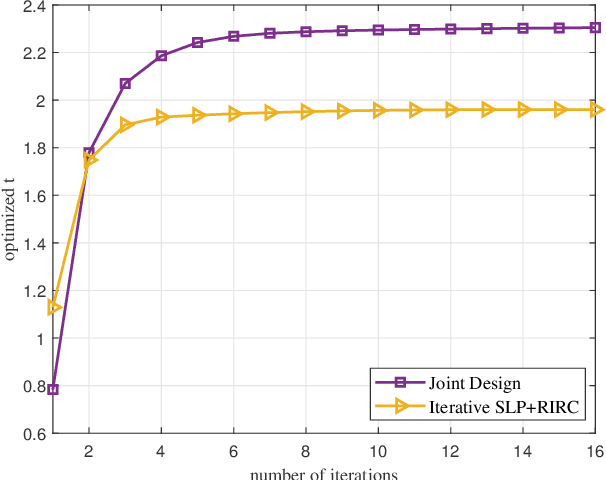
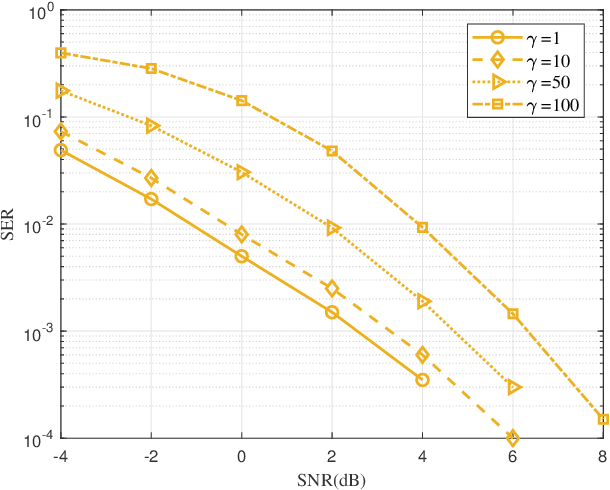
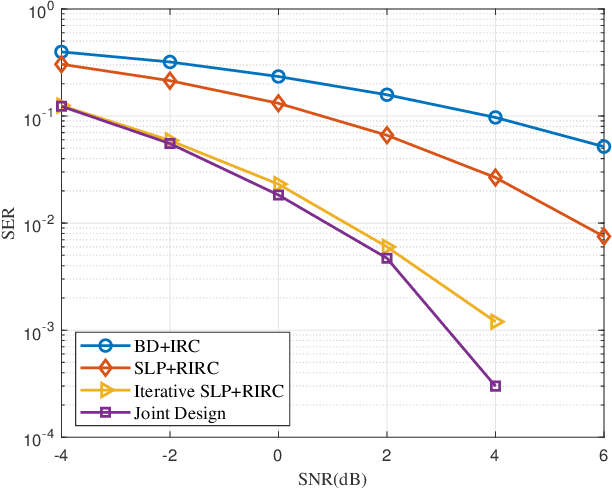
Abstract:Consider a multiuser multiple-input multiple-output (MU-MIMO) downlink system in which the base station (BS) sends multiple data streams to multi-antenna users via symbol-level precoding (SLP), where the optimization of receive combining matrix becomes crucial, unlike in the single-antenna user scenario. We begin by introducing a joint optimization problem on the symbol-level transmit precoder and receive combiner. The problem is solved using the alternating optimization (AO) method, and the optimal solution structures for transmit precoding and receive combining matrices are derived by using Lagrangian and Karush-Kuhn-Tucker (KKT) conditions, based on which, the original problem is transformed into an equivalent quadratic programming problem, enabling more efficient solutions. To address the challenge that the above joint design is difficult to implement, we propose a more practical scheme where the receive combining optimization is replaced by the interference rejection combiner (IRC), which is however difficult to directly use because of the rank-one transmit precoding matrix. Therefore, we introduce a new regularized IRC (RIRC) receiver to circumvent the above issue. Numerical results demonstrate that the practical SLP-RIRC method enjoys only a slight communication performance loss compared to the joint transmit precoding and receive combining design, both offering substantial performance gains over the conventional BD-based approaches.
Waveform Design for Communication-Assisted Sensing in 6G Perceptive Networks
May 19, 2023Abstract:The integrated sensing and communication (ISAC) technique has the potential to achieve coordination gain by exploiting the mutual assistance between sensing and communication (S&C) functions. While the sensing-assisted communications (SAC) technology has been extensively studied for high-mobility scenarios, the communication-assisted sensing (CAS) counterpart remains widely unexplored. This paper presents a waveform design framework for CAS in 6G perceptive networks, aiming to attain an optimal sensing quality of service (QoS) at the user after the target's parameters successively ``pass-through'' the S$\&$C channels. In particular, a pair of transmission schemes, namely, separated S&C and dual-functional waveform designs, are proposed to optimize the sensing QoS under the constraints of the rate-distortion and power budget. The first scheme reveals a power allocation trade-off, while the latter presents a water-filling trade-off. Numerical results demonstrate the effectiveness of the proposed algorithms, where the dual-functional scheme exhibits approximately 12% performance gain compared to its separated waveform design counterpart.
Integrated Sensing and Communications: Recent Advances and Ten Open Challenges
Apr 29, 2023
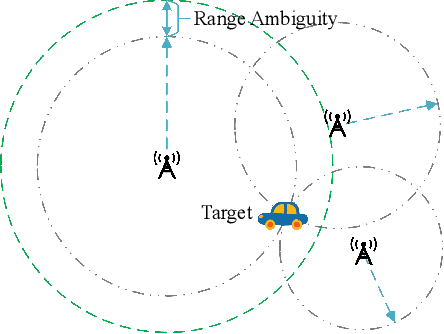
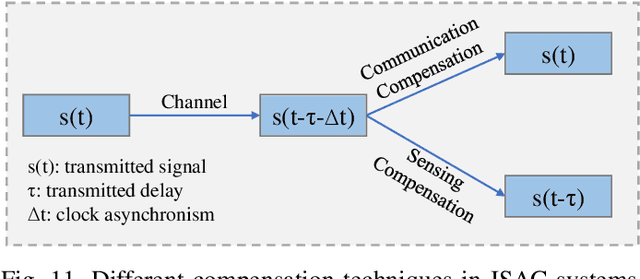
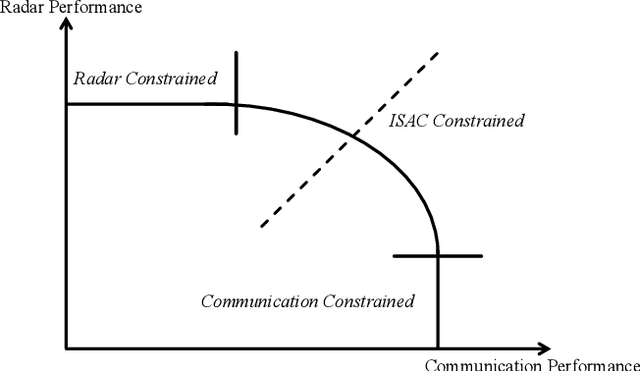
Abstract:It is anticipated that integrated sensing and communications (ISAC) would be one of the key enablers of next-generation wireless networks (such as beyond 5G (B5G) and 6G) for supporting a variety of emerging applications. In this paper, we provide a comprehensive review of the recent advances in ISAC systems, with a particular focus on their foundations, system design, networking aspects and ISAC applications. Furthermore, we discuss the corresponding open questions of the above that emerged in each issue. Hence, we commence with the information theory of sensing and communications (S$\&$C), followed by the information-theoretic limits of ISAC systems by shedding light on the fundamental performance metrics. Next, we discuss their clock synchronization and phase offset problems, the associated Pareto-optimal signaling strategies, as well as the associated super-resolution ISAC system design. Moreover, we envision that ISAC ushers in a paradigm shift for the future cellular networks relying on network sensing, transforming the classic cellular architecture, cross-layer resource management methods, and transmission protocols. In ISAC applications, we further highlight the security and privacy issues of wireless sensing. Finally, we close by studying the recent advances in a representative ISAC use case, namely the multi-object multi-task (MOMT) recognition problem using wireless signals.
Rethinking Estimation Rate for Wireless Sensing: A Rate-Distortion Perspective
Mar 21, 2023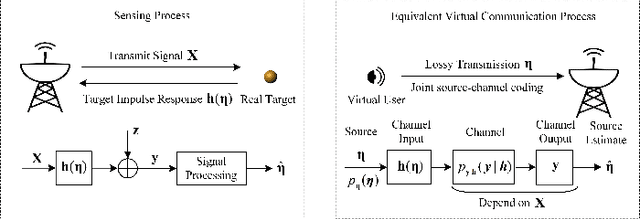
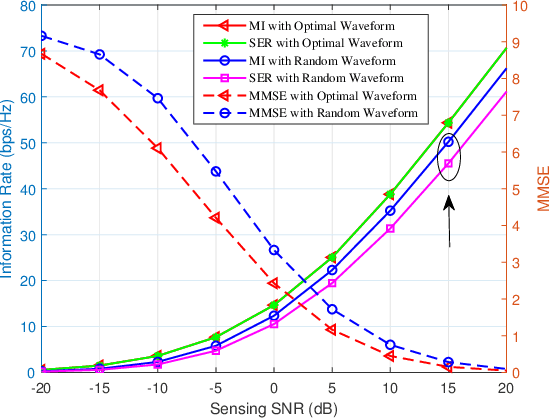
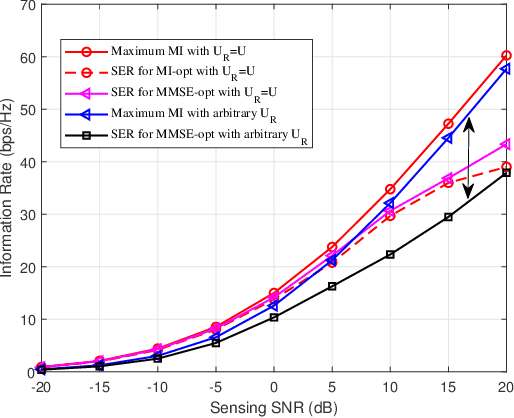
Abstract:Wireless sensing has been recognized as a key enabling technology for numerous emerging applications. For decades, the sensing performance was mostly evaluated from a reliability perspective, with the efficiency aspect widely unexplored. Motivated from both backgrounds of rate-distortion theory and optimal sensing waveform design, a novel efficiency metric, namely, the sensing estimation rate (SER), is defined to unify the information- and estimation- theoretic perspectives of wireless sensing. Specifically, the active sensing process is characterized as a virtual lossy data transmission through non-cooperative joint source-channel coding. The bounds of SER are analyzed based on the data processing inequality, followed by a detailed derivation of achievable bounds under the special cases of the Gaussian linear model (GLM) and semi-controllable GLM. As for the intractable non-linear model, a computable upper bound is also given in terms of the Bayesian Cram\'er-Rao bound (BCRB). Finally, we show the rationality and effectiveness of the SER defined by comparing to the related works.
Joint Beamforming Design for Dual-Functional MIMO Radar and Communication Systems Guaranteeing Physical Layer Security
Jan 01, 2023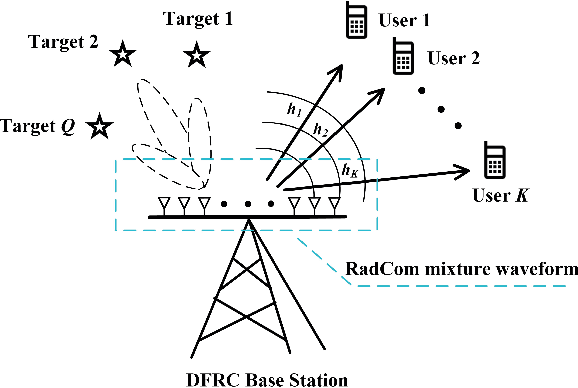
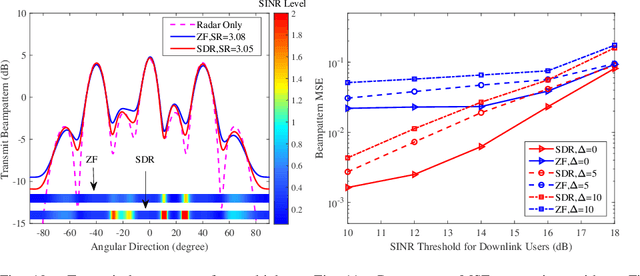
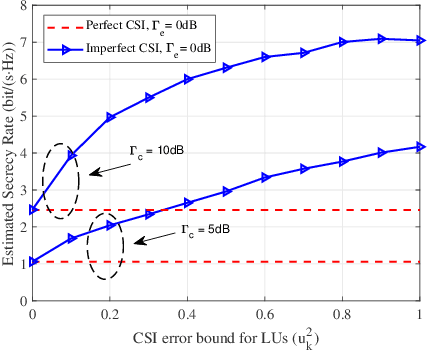
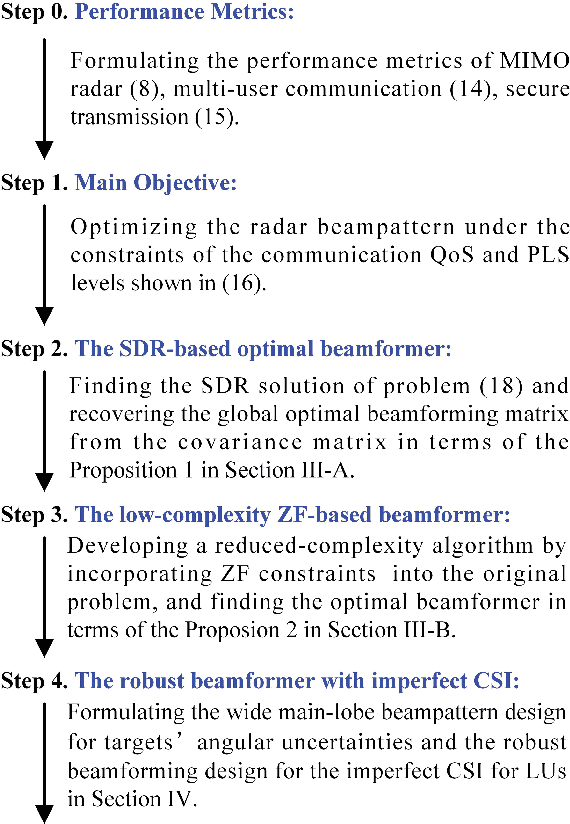
Abstract:The dual-functional radar and communication (DFRC) technique constitutes a promising next-generation wireless solution, due to its benefits in terms of power consumption, physical hardware, and spectrum exploitation. In this paper, we propose sophisticated beamforming designs for multi-user DFRC systems by additionally taking the physical layer security (PLS) into account. We show that appropriately designed radar waveforms can also act as the traditional artificial noise conceived for drowning out the eavesdropping channel and for attaining increased design degrees of freedom (DoF). The joint beamforming design is formulated as a non-convex optimization problem for striking a compelling trade-off amongst the conflicting design objectives of radar transmit beampattern, communication quality of service (QoS), and the PLS level. Then, we propose a semidefinite relaxation (SDR)-based algorithm and a reduced-complexity version to tackle the non-convexity, where the globally optimal solutions are found. Moreover, a robust beamforming method is also developed for considering realistic imperfect channel state information (CSI) knowledge. Finally, simulation results are provided for corroborating our theoretical results and show the proposed methods' superiority.
 Add to Chrome
Add to Chrome Add to Firefox
Add to Firefox Add to Edge
Add to Edge